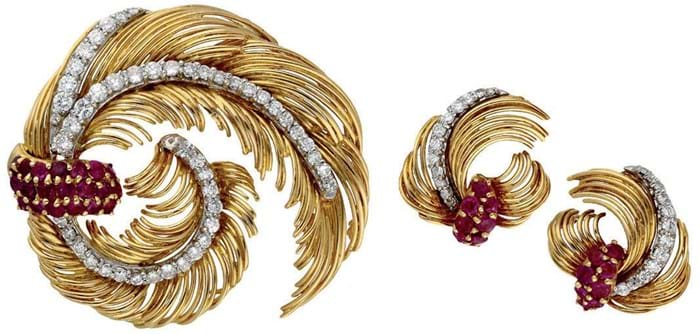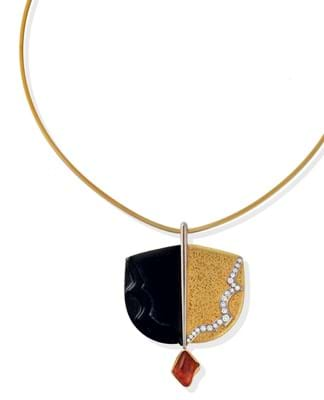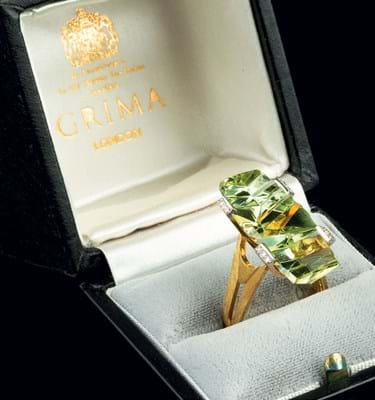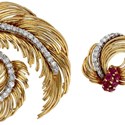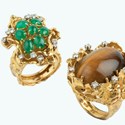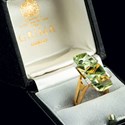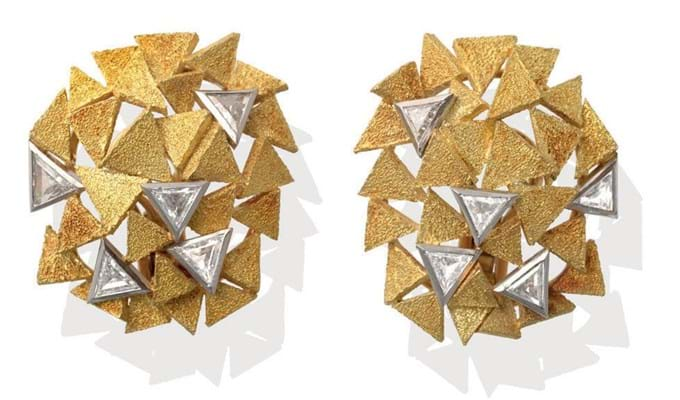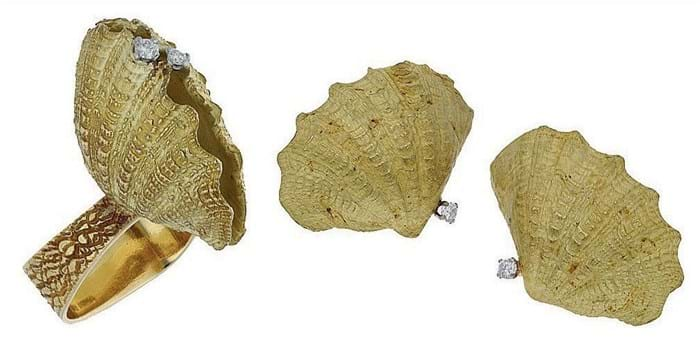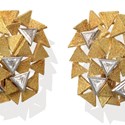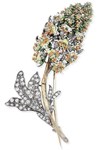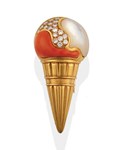But the secondary market for both makers has evolved significantly in recent years from niche to mainstream.
Today this bold Sixties and Seventies style, characterised by textured goldwork and exotic stones, pearls or grained quartzes, whose visual impact far outweighed their monetary value, appeals far beyond a handful of fashionistas.
A 1991 Grima retrospective at Goldsmiths Hall (where his talent was first spotted by art director Graham Hughes in 1960) was important in re-establishing his reputation and so too a sale of 80 lots at Bonhams in 2006. However, it is the cyclical nature of taste and fashion that has finally come back to ‘the king of Jermyn Street’.
Daring Grima
The March 27 jewellery sale at Mallams Oxford (22.5% buyer’s premium) included a characteristically daring Grima green beryl and diamond dress ring. It was consigned from a local lady who had inherited it from her mother, a Scottish artist.
Signed and hallmarked for London 1970, and offered in a maker’s case, the central stone has a ‘mystery cut’, fashioned with a cabochon top above a pavilion of angled facets. The estimate was an appealing £1000-1500 but via thesaleroom.com it sold to a collector of Grima’s work at £9000.
The sale at Tennants (20% buyer’s premium) on March 23 included two pieces of Grima among more than 40 lots by leading 20th century ateliers from the estate of Kamal and Margaret el Shamy. The couple, who met when both were senior registrars in Sheffield in the 1960s, died within days of each other last year, with a joint funeral held in their North Yorkshire village.
Particularly admired was a pair of 18ct gold and diamond earrings (with post and clip fittings) marked for Grima and London, 1970. Fashioned from multiple textured yellow gold triangles punctuated by five triangular cut diamonds, the pair was estimated at £2000-3000 but took £8200.
An 18ct gold onyx, rough tumbled fire opal and diamond pendant hallmarked for 1987 was a little outside ‘prime period’ Grima but, suspended from a stiff collar gold necklace marked for 1974, it sold for £5900 (estimate £1500-2000). The lots from this consignment went to a mix of private UK and London trade buyers.
Eye-catching Kutchinsky
The history of the Kutchinsky brand dates back much further to 1893. However, the firm is best associated with the post-war era when, flourishing under the aegis of Joseph Kutchinsky, it moved to the Brompton Road in Knightsbridge, and was producing a purposefully ostentatious range of 18ct yellow gold and coloured gemstone jewellery.
These designs are as eye-catching and wearable today as they were two generations ago.
A dress ring by Kutchinsky (London 1968) with an abstract textured mount centred with a ‘pool’ of pavé set graduated round brilliant-cut diamonds sold for £2400 (estimate £1000-1500) at Mallams.
Louise Dennis, head of jewellery, said it had come for sale from an Oxford academic who had purchased it as a gift for his wife in the Swinging Sixties. It sold to a local private lady, “a retired professional, who had much admired Kutchinsky’s designs at that time but couldn’t afford them, so she is delighted to own a piece at last”.
Increasingly clients shopping for something by these brands are having their head turned by the likes of Alan Gard, Gerda Flockinger, David Thomas and Charles de Temple – designers whose jewellery can be just as striking but a little cheaper.
At Mallams treble-estimate sums were bid for bold dress rings by George Weil, the St Martins-trained artist who worked from Hatton Garden until emigrating to Israel in 1979.
A ring c.1970-75 claw set with an oval cabochon tiger’s eye and a brilliant-cut diamond accents to a pierced and textured abstract mount took £2100.
Another designed as a tiered abstract flowerhead with a cluster of oval cabochon emeralds framed by brilliant-cut diamonds (London 1975) made £1600. Both were consigned from the estate of a local lady.


